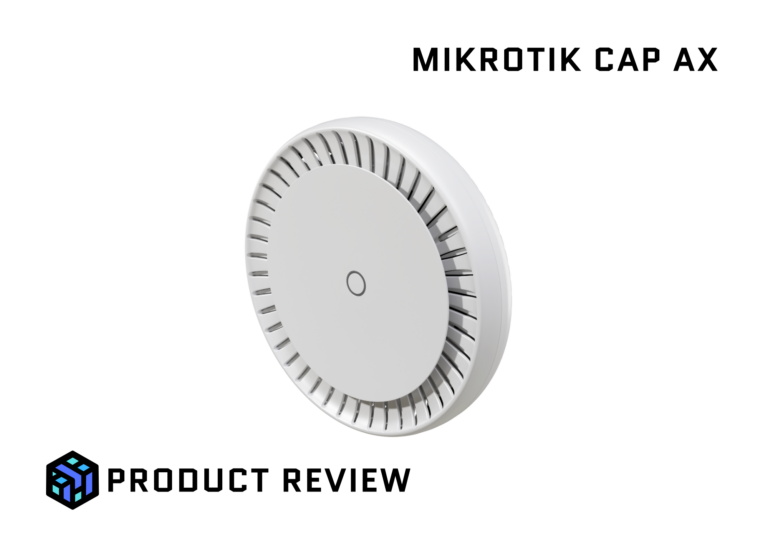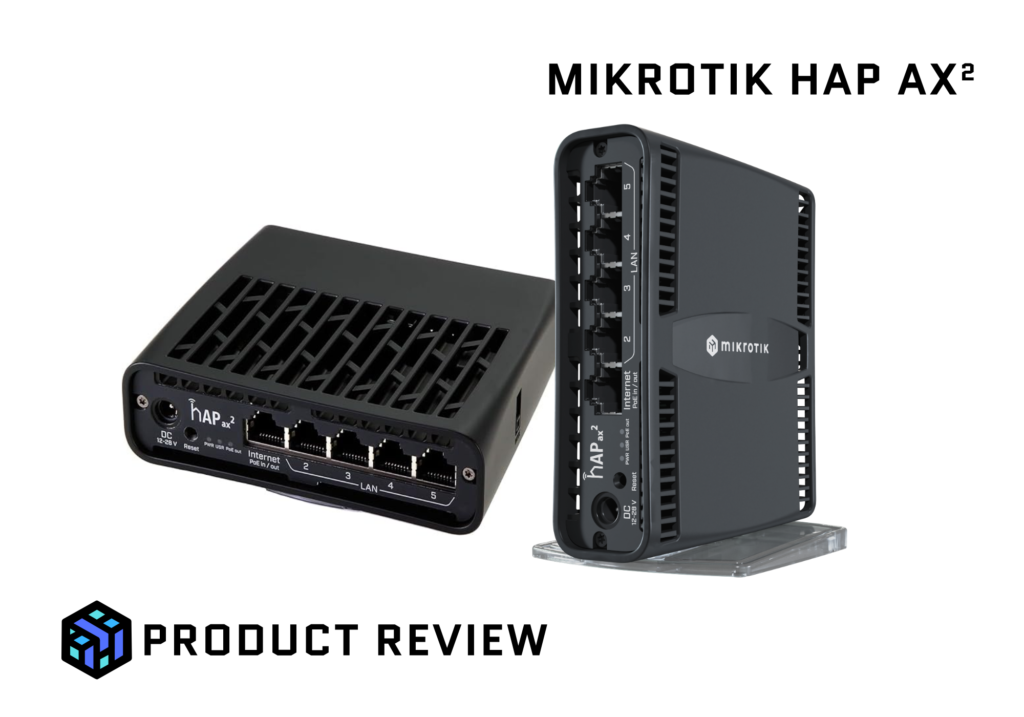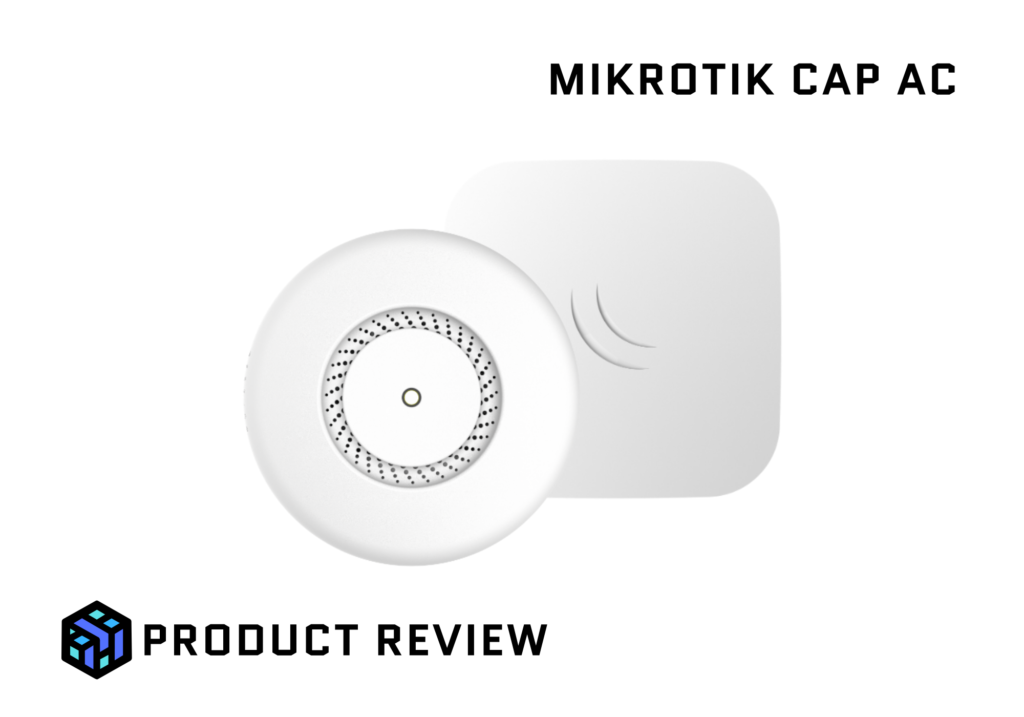An Affordable Wi-Fi 6 Access Point Worth Considering
The MikroTik cAP ax is an affordable Wi-Fi 6 access point (AP) that caters to both small businesses and home users seeking modern network technology without overspending. MikroTik, known for its robust and cost-efficient networking products, offers the cAP ax as a dual-band access point featuring the latest 802.11ax standard, gigabit connectivity, and centralized management options. But how does it stack up against competitors at similar price points?
Key Features of the MikroTik cAP ax
- Wi-Fi 6 Technology: The cAP ax supports the latest 802.11ax standard, delivering enhanced throughput and reduced latency compared to older Wi-Fi 5 devices.
- Dual-band support (2.4 GHz and 5 GHz) ensures flexibility and improved performance.
- Up to 1800 Mbps combined speed (574 Mbps on 2.4 GHz, 1200 Mbps on 5 GHz).
- Hardware and Connectivity:
- Equipped with a 1 Gbps Ethernet port and a 2.5 Gbps Ethernet port, future-proofing your network for higher-speed internet or LAN connections.
- Powered by PoE (Power over Ethernet) for a clean, cable-minimized setup.
- 4×4 MU-MIMO and beamforming for better device concurrency and range.
- Design and Installation: Compact, ceiling-mountable design blends discreetly into any environment, with easy installation for small businesses and home offices.
- Management: Integrated into the MikroTik RouterOS ecosystem, allowing centralized management via CAPsMAN. Supports custom configurations, though it may require a learning curve for users unfamiliar with RouterOS.
- Pricing: Retailing around $150–$160 (price may vary by region), it sits comfortably in the mid-range access point market.
Affordability Compared to Competitors
One of the standout features of the MikroTik cAP ax is its affordability. For the price, you gain Wi-Fi 6 performance, multi-gigabit Ethernet, and robust configuration options—features typically reserved for pricier models from competing vendors.
Comparison with Ubiquiti UniFi 6 Lite
- Price: The UniFi 6 Lite is similarly priced at around $100–$120 but offers lower maximum throughput (300 Mbps on 2.4 GHz and 1200 Mbps on 5 GHz).
- Ease of Use: Ubiquiti’s UniFi software is praised for its user-friendly interface, making it easier to deploy than MikroTik’s RouterOS.
- Hardware: Lacks a 2.5 Gbps Ethernet port, which the cAP ax provides.
Comparison with TP-Link EAP670
- Price: Priced slightly higher at $160–$170, the TP-Link EAP670 offers faster speeds (up to 3000 Mbps combined) and features such as Omada centralized management.
- Performance: While the EAP670 edges out the cAP ax in sheer speed, it doesn’t provide the same level of configurability and flexibility that MikroTik is known for.
Comparison with Aruba Instant On AP22
- Price: Slightly more expensive at $170–$180.
- Features: The AP22 has a polished cloud-based management system and a user-friendly interface but lacks the 2.5 Gbps Ethernet port.
- Target Audience: More suitable for users prioritizing simplicity over granular control.
Strengths of the MikroTik cAP ax
- Cost-Effective Wi-Fi 6: With solid performance at an affordable price, it’s one of the best-value options for advanced home and small business networks.
- Flexible Deployment: The inclusion of a 2.5 Gbps Ethernet port and support for PoE make it versatile in both wired and wireless setups.
- Customization: MikroTik’s RouterOS provides extensive configuration options, which can be advantageous for tech-savvy users.
Weaknesses of the MikroTik cAP ax
- Complexity for Beginners: RouterOS has a steep learning curve compared to the plug-and-play management systems offered by Ubiquiti or TP-Link.
- Speed Limitations: While its speeds are adequate for most users, competitors like TP-Link EAP670 outpace it in terms of raw performance.
- Limited Ecosystem Appeal: Unlike Ubiquiti, MikroTik does not have as extensive an ecosystem for unified management and seamless integration with other devices.
Final Thoughts
The MikroTik cAP ax strikes a balance between affordability and feature set, making it a compelling choice for small businesses and power users comfortable with advanced networking configurations. While its software may be intimidating for beginners, the hardware capabilities—particularly the 2.5 Gbps Ethernet port—stand out in this price range. Compared to competitors, it offers superior flexibility and configurability but falls short in ease of use and raw throughput.
For users looking for a budget-friendly Wi-Fi 6 access point with professional-grade features, the cAP ax is worth considering. It’s especially appealing for those already invested in MikroTik’s ecosystem or willing to learn its configuration tools. However, for simpler deployment or faster speeds, alternatives like the TP-Link EAP670 or UniFi 6 Lite might be better suited.
For readers ready to upgrade to a Wi-Fi 6 network, purchase the MikroTik cAP ax here and unlock next-gen connectivity at a competitive price.




